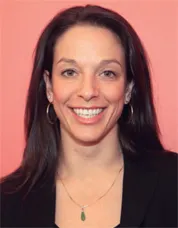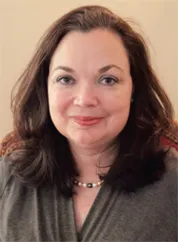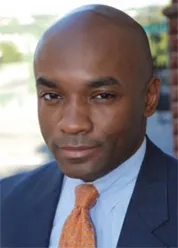The Evolution of the Bigelow Program
While the University of Chicago Law School provides its students with a remarkably wide range of legal classes, none is more important than the required first-year course in legal research and writing. Contracts, torts, criminal law, and the other first-year stalwarts are all fascinating subjects and can provide the basis for a legal career, but none can be practiced without a firm grounding in how to construct and convey a legal argument.
“A lot of the first year, it’s not about any one particular thing you learn,” notes Douglas Baird, Harry A. Bigelow Distinguished Service Professor of Law and former director of the Bigelow program. “It’s more that you learn to think like a lawyer and you understand how to put together a legal argument. That is what the Bigelow program is about.”
Every year, each first-year law student is assigned to a legal writing section, which is taught by one of the best young legal minds in the country—a Bigelow Fellow. The Bigelow Fellows are an elite group of scholars selected from applicants who have graduated from the best law schools all over the US and commonwealth nations. Many of them come to the Law School directly from prestigious clerkships, impressive practice opportunities, or other highly regarded fellowships. They are chosen to give Law School students the very best possible foundation in legal thinking.
“We hire the best people, the ones who tend to be better teachers,” explains Jonathan Masur, a former Bigelow Fellow and an assistant professor at the Law School. “The University of Chicago has a cultural commitment to good teaching, and it is really evident in our writing program.” Legal writing has been key to the curriculum of the Law School since its inception, and continues to be viewed as a fundamental necessity of legal training—not to mention one of the greatest strengths of the Law School.
“The research and writing program is as important as ever here,” says Saul Levmore, William B. Graham Distinguished Service Professor and former dean of the Law School. “It is always a pleasure to hear from law firms, judges, and other employers, because they compare our graduates so very favorably with the graduates of other writing programs. Indeed, applicants to our Bigelow program often say that their Chicago-trained coclerks inspired them to think that our writing program would be really great.”
Legal writing and research were part of a larger Introduction to Law course for the first three decades of the School’s existence. It first became its own class—a radical new idea in legal education—in 1936, when the required course called Methods and Materials of Legal Research launched, earning students one-half a credit. The following year a new curriculum called the New Plan was introduced and the class, now called Legal Methods and Materials, took on the description of a tutorial program. The writing tutorial class was part of a pioneer law school curriculum adopted toward broadening the objectives of legal education. In fact, in a 1938 proposal to extend the tutorial program, the motivation for the program is spelled out: “Lawyers widely agree that the most serious deficiencies of graduates of law schools lie in two fields. The first is the drafting of documents such as pleadings, contracts, conveyances, leases, regulations, and statutes. The other deficiency is in the ability to use knowledge of various fields of law in the analysis of a complicated situation so as to develop a constructive plan of action.”
The tutorial program assigned each member of the first-year class to a member of the faculty or one of the special tutors. The students were required to investigate topics selected in view of their interests and to organize the material in concise written form. The papers were then criticized in great detail and were required to be rewritten. The New Plan ended in 1949, and a revamped curriculum was adopted. But the writing tutorial was still an essential first-year class.
From the beginning, the writing and research tutorial program was taught by graduates of the world’s best law schools. In 1940, the program had three tutors, who hailed from Harvard, Oxford, and Cambridge. But by the middle of the decade, change was afoot. ProfessorWilber G. Katz wrote to President Ernest C. Colwell to abolish the title of tutor from the writing and research program and replace it with the term Teaching Fellow, which would indicate that the program “is particularly important for the School and one needing support. Then too, we think the title will help to make the positions attractive.”
Consequently, the Harry A. Bigelow Teaching Fellowships were established in 1947 in honor of Harry A. Bigelow, the John P.Wilson Professor Emeritus of Law and dean of the Law School. In 1953, moot court exercises were introduced into the tutorials.
Associate Justice Raya Dreben of the Massachusetts Appeals Court was a Bigelow Fellow in 1955–1956. A graduate of Harvard Law School, she had spent a year clerking for a federal district judge. “I did not want to be an academic, and I wasn’t required to do any research, but I very much enjoyed the teaching aspect of the fellowship,” Dreben says. “It was primarily one on one with students, and I still do that as I have mentored most of the new judges on the Massachusetts Appeals Court.”
Unsurprisingly for the time, Dreben was the only female Bigelow that year. After completing her fellowship, which at the time was still a one-year program, Dreben went on to become the first part-time attorney to become a partner in a major Boston firm. She also taught copyright law at Harvard and in 1978 was appointed to the court.
During the fifties, the Bigelow program evolved, and the number of Fellows varied from year to year as the program changed. In 1952, there were five Bigelows; by 1955 there were nine, as second- and third-year research and writing courses were introduced. The third-year program only lasted for a year, but the second-year program continued through the 1965–1966 school year.
The Bigelow program continued with only small changes, such as the number of Fellows, for the next thirty years or so. In 1979, the number of Fellows was firmly established at six. Students still spent a year studying and writing, and their Fellows guided their research. Interestingly, the writing program has never been attached to a particular subject matter, and for years the Fellows all selected the topics their students would write about independently.
“We actually insisted on that,” explains Baird. “Otherwise, if they were all writing about one topic, there would be 180 students all trying to get the same book. But these days, the Bigelows coordinate together what the students will write about, which is fine, because students no longer research with books.”
Although the Bigelow program has always afforded the Fellows a tremendous academic opportunity, the prestige of the Bigelow program grew significantly in the late 1980s. Garnering a position in the program steadily became more difficult. By the early 1990s, the program offered the possibility of a second fellowship year, which allowed the Fellows to have a year of teaching and research under their belts before putting themselves on the academic market. The Fellows, who had long been included in most activities of the faculty, began to be chosen in much the same way as tenure-track teachers. Applications are reviewed, and the directors of the program select the candidates who are most likely to be successful Fellows to bring to the Law School. The candidates then spend a day interviewing—just as potential tenure-track faculty do—with members of the faculty, the dean of students, and, finally, the dean of the Law School.
“The law school hiring market has really changed,” Baird notes. “Today, it’s very unusual to be hired at any of the top 20 law schools if you don’t have a postdoc, a PhD in another field, or some kind of teaching fellowship. And the Bigelow program has emerged as the premier postdoctoral program for prospective legal scholars.” Indeed, the fellowship program at the Law School has long had characteristics that hold it apart from those at other top law schools.
“There are lots of opportunities in academia to have an office to sit in for two years and write something,” Masur observes. “But here, the faculty really think of it as part of their responsibilities to help Bigelows with their scholarship, to nurture and bring them along. You have tremendous access to the faculty and the faculty is engaged in the work of the Bigelows. That is simply not the case at most other schools.”
Professor Lee Fennell, who now runs the Bigelow program with Masur, had already held a scholar-in-residence position at the University of Virginia—which gave her an office and access to a law library—before becoming a Bigelow in 1999. She completed two law review articles while a Fellow, but also learned a great deal from the teaching portion of her program.
“Chicago students are just terrific,” Fennell says. “I also learned an enormous amount from attending faculty workshops and reading the work of faculty and outside presenters who gave papers during my Bigelow stint. This was a side of legal academia I’d seen little of previously, and it opened my eyes to the kinds of scholarship and the range of methodologies being pursued.”
The combination of teaching and academic guidance makes the Bigelow Fellowship a marvelous introduction to academic life, and graduates of the program are evidence of that. Former Bigelows are now law professors at Harvard, Columbia, Northwestern, and other top programs, including the Law School. Those who have not pursued academic careers include judges, district attorneys, and other legal stars. But those who have gone on to teach have found the program to be a nearly perfect transition into academia.
“The Bigelow Fellowship was an ideal stepping stone to the entry-level teaching market,” notes Josh Bowers, an associate professor of law at the University of Virginia who was in the program from 2006 to 2008. “It provided me with so much more than just the opportunity to research and write. It immersed me in one of the most rigorous settings in legal academia, and it surrounded me with some of the best minds working today. And, to a person, the members of the faculty were generous with their time and support. They read my drafts, provided me with constructive feedback, and helped me to recognize what constitutes original and interesting questions.”
The Bigelow program continues to evolve in myriad ways, such as adding prizes for student achievement and tweaking how the end-of-year moot court exercise is run. But Masur is understandably hesitant to tinker too much. “Lee [Fennell] and I inherited a program that we thought was in terrific shape,” says Masur. “Our goal was to continue it at the same level.”
In the fall, three new Bigelow Fellows will begin to teach first-year students the most essential skills they will need for their law careers. And by teaching the very fine students of the University of Chicago Law School, and working with its faculty, these Bigelows will no doubt become shining lights in the legal world, bringing with them the first-class research and outstanding teaching skills they honed while working at the Law School.
| Academic Years | Name | First job after completion of fellowship | Current institution |
|---|---|---|---|
| 1999-2001 | Eric R. Claeys | St. Louis University | George Mason |
| 1999-2001 | Lee A. Fennell | University of Texas | University of Chicago |
| 1999-2001 | Robert A. Katz | Indiana University, Indianapolis | Indiana University, Indianapolis |
| 2000-02 | James P. Madigan | Goldberg Kohn | University of Chicago & Greenberg Traurig LLP |
| 2000-02 | Jonathan Nash | Tulane | Emory |
| 2000-02 | Ryan Goodman | Harvard | NYU |
| 2001-03 | Adam Feibelman | University of Cincinnati | Tulane University |
| 2001-03 | Andrea Bjorklund | UC Davis | UC Davis |
| 2001-03 | Tom Colby | George Washington University | George Washington University |
| 2002-04 | Adam B. Cox | University of Chicago | University of Chicago |
| 2002-04 | Jenia Iontcheva Turner | SMU Dedman | SMU Dedman |
| 2002-04 | Jide O. Nzelibe | Northwestern University | Northwestern University |
| 2003-04 | Stephanie Stern | Loyola University Chicago | Chicago-Kent |
| 2003-05 | Elizabeth Emens | Columbia | Columbia |
| 2003-05 | John Bronsteen | Loyola University Chicago | Loyola University Chicago |
| 2004-06 | Kirsten Smolensky | University of Arizona | University of Arizona |
| 2004-06 | Lesley Wexler | Florida State University | University of Illinois |
| 2004-06 | Rachel Brewster | Harvard | Harvard |
| 2004-06 | William Ford | John Marshall | John Marshall |
| 2005-07 | David Fagundes | Southwestern | Southwestern |
| 2005-07 | Jonathan Masur | University of Chicago | University of Chicago |
| 2006-08 | Daniel Abebe | University of Chicago | University of Chicago |
| 2006-08 | Jamelle Sharpe | University of Illinois | University of Illinois |
| 2006-08 | Joshua Bowers | University of Virginia | University of Virginia |
| 2006-08 | Robin Effron | Brooklyn | Brooklyn |
| 2007-09 | Irina Manta | Case Western Reserve University | Case Western Reserve University |
| 2007-09 | Shyamkrishna Balganesh | University of Pennsylvania | University of Pennsylvania |
| 2008-10 | Adam Badawi | Washington University in St. Louis | Washington University in St. Louis |
| 2008-10 | Adam Muchmore | Penn State | Penn State |
| 2008-10 | Arden Rowell | University of Illinois | University of Illinois |
| 2008-10 | Mary Anne Franks | University of Miami | University of Miami |
| 2009-11 | Tony Casey | Chicago | |
| 2009-11 | Anthony Niblett | Toronto | |
| 2009-11 | Matt Tokson | Supreme Court - Justice Souter |


